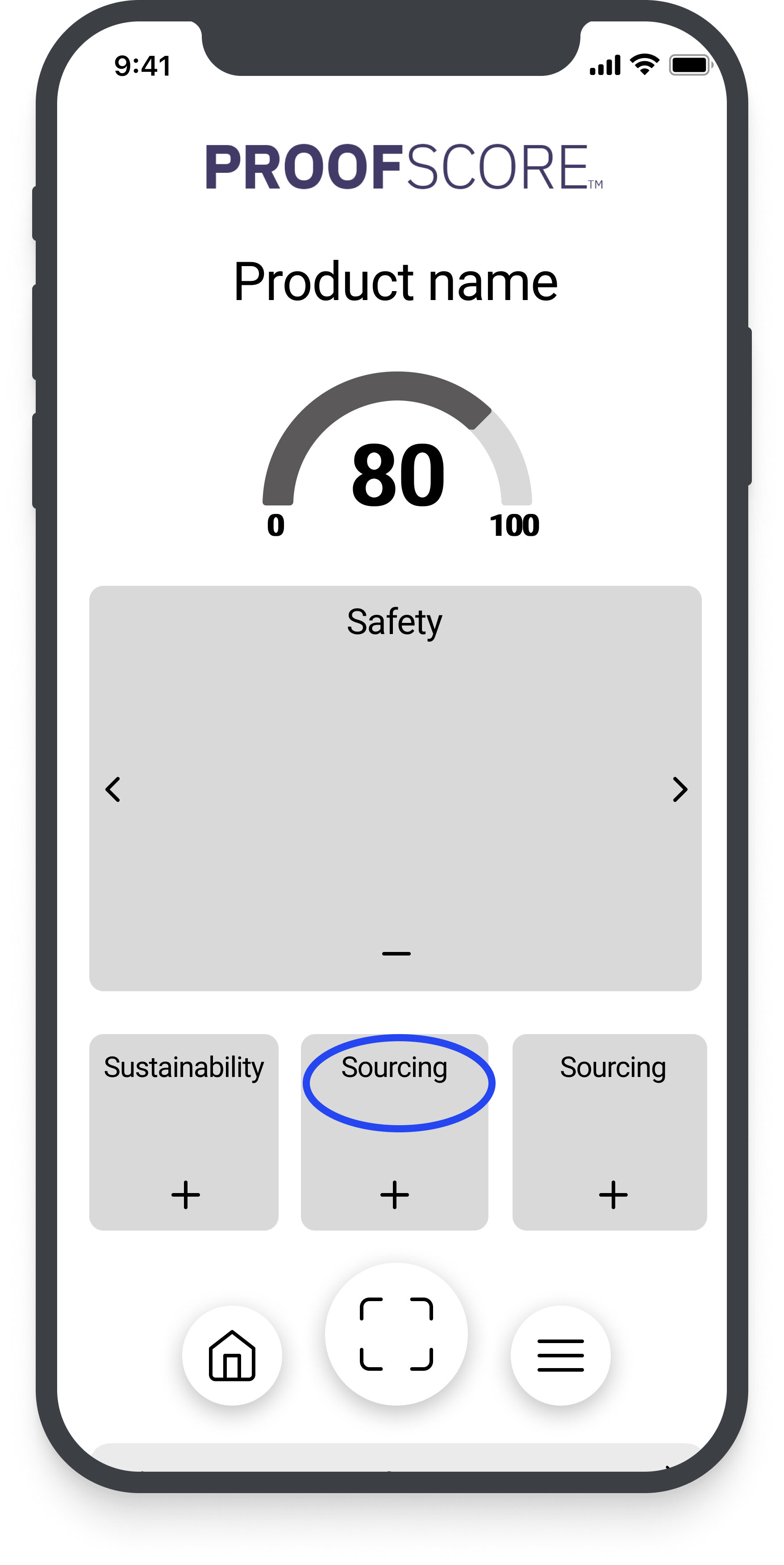Transparent Path
A Seattle-based company that provides supply chain visibility for the shipment of perishable goods, such as food and pharmaceuticals. Transparent are the creators of proof score.
What is ProofScore?
Overview
Credit score for transparency
Provides consumers information about product as it moves through supply chain
The more data that is shared by producer, the higher the ProofScore
Team: Brianna Tran, Sayre Tripp, Rachel Cohen & Jenny Pham
Device + Project Type: Mobile responsive website.
Role + Responsibilities: Research Lead, Problem Statement, Business Statement, HMWs, Sketches and Wireframing, Usability testing, Mobile website design.
Duration: This project was 3 weeks in duration.
Tools or Methods: Figma, Maze, Google docs, Discover, Define, Design, Deliver.
Problem:
Since there are no credible way to track and hold companies accountable for items such as perishable foods and medications moving down the supply chain line. Transparent path wanted a way to provide a score and information about the product to consumers.
As well as wanted to hold companies accountable to a higher degree when items are going through a supply chain to reduce waste. They want to give consumers an upper hand in what they are purchasing by equipping them the power of knowledge behind the product.
Solution:
Our team designed a mobile responsive application that gives users the opportunity to scan an item then be able to view the “proof score.” The higher the “transparency”, meaning the more proof the company can provide with the process of getting the product from the manufacture to the store the higher the rating.
We then broke the score into a scale of 0 (lowest)- 100 (highest). Then we broke down information behind the product into four categories consisting safety, sourcing, shelf- life and sustainability calling the categories “My Values”. We then gave users a choice, letting users rate from a high, medium to low stand point on how much important each category is to them giving users a sense of empowerment and equipping them with the information they may need to purchase the product.
Previous Research: Design
What should be included in ProofScore:
Transparent path have worked with previous General Assembly cohorts in the past for research purposes in what key factors should be in ProofScore. A survey was conducted from a previous cohort with 139 participants from the ages of 19-75. They rated the following factors as most important from food safety being the most and storage information being the least important.
Other takeaways from the previous research is:
Users want to prioritize the factors that are most valuable to them
Users want to know what goes into a score
Users want skimmable information
Users associate green with positivity
“Shoppers seek out information that they perceive as important to help them make decisions on what they consume.”
User Persona
Breaking Down the Score
Our Design Choices
Transparent path wanted our team to solidify the previous research. We set out to do a desirability test. We conducted a survey with 51 participants recruited via slack, reddit and other social medias such as LinkedIn or Facebook.
Half circle display without percentage. Users preferred half circles with out a percentage next to the score because it was simple to understand and overall our team thought it was a clean design.
Users have the opportunity to choose their values to give user’s a sense of empowerment. We decided to go with a high, medium and low rating because we felt like it was simple for users to understand.
Our team decided to choose a card sort for the design of the home page. Users and my team thought this was a more modern approach for the homepage.
ReFed & Lily Herd
ReFed is a national nonprofit working to reduce food waste and loss. Transparent path connected us with Lily Herd, a capital, innovation and engagement manager at ReFed. We had the opportunity to interview Lily to gain better insights on what should be included in ProofScore.
Suggestions that could be included in ProofScore:
Moderated Usability Test
Task 1:
A moderated usability test with three task was conducted with nine participants. The first task was to create an account with ProofScore.
Users glossed over the create an account CTA
Users didn’t understand that they could scroll
Task 2:
Adjust your settings to reflect which values are most important to you
Task 3:
Users were confused by the buttons and universal navigation
Users didn’t understand the difference between profile and settings
Scan an item’s ProofScore and see if it’s from a local farm.
Users felt the scan button wasn’t clear
Plus signs on the score breakdown were not clear calls to action
Changes for Hi-Fi Prototype
Unmoderated Usability Study
Our team conducted an unmoderated usability test using a platform called Maze. We asked users to conduct the same three tasks as the moderated usability test.


















